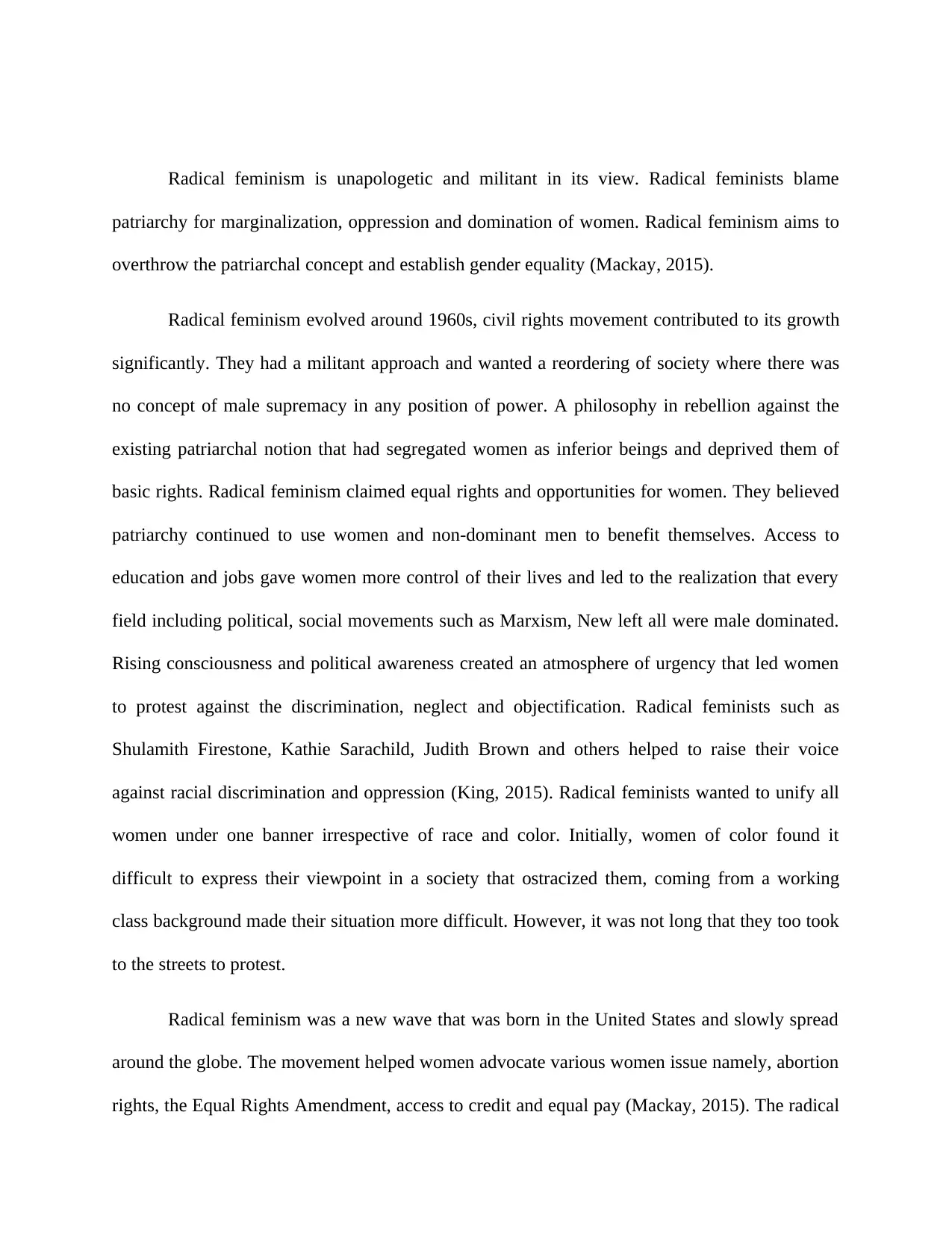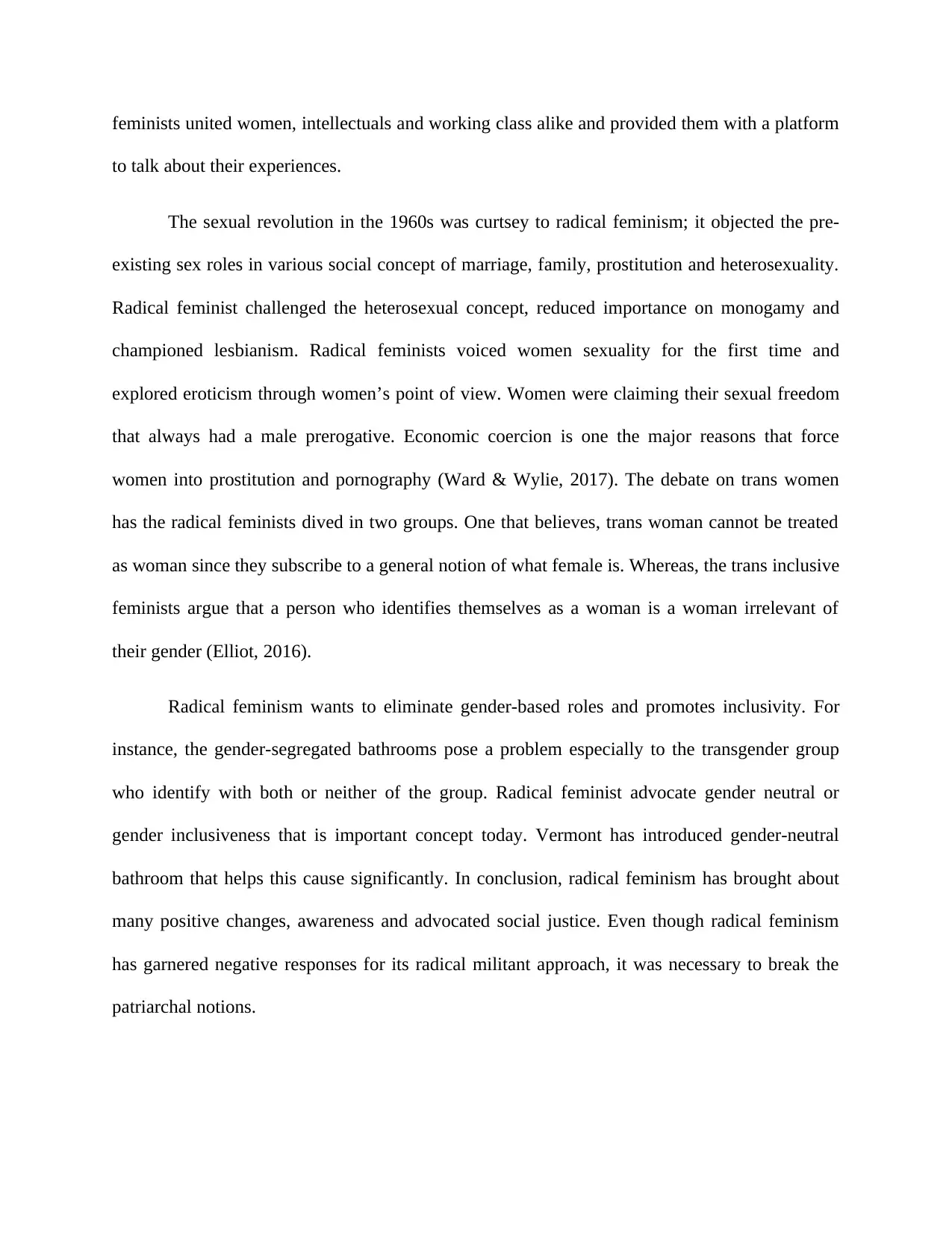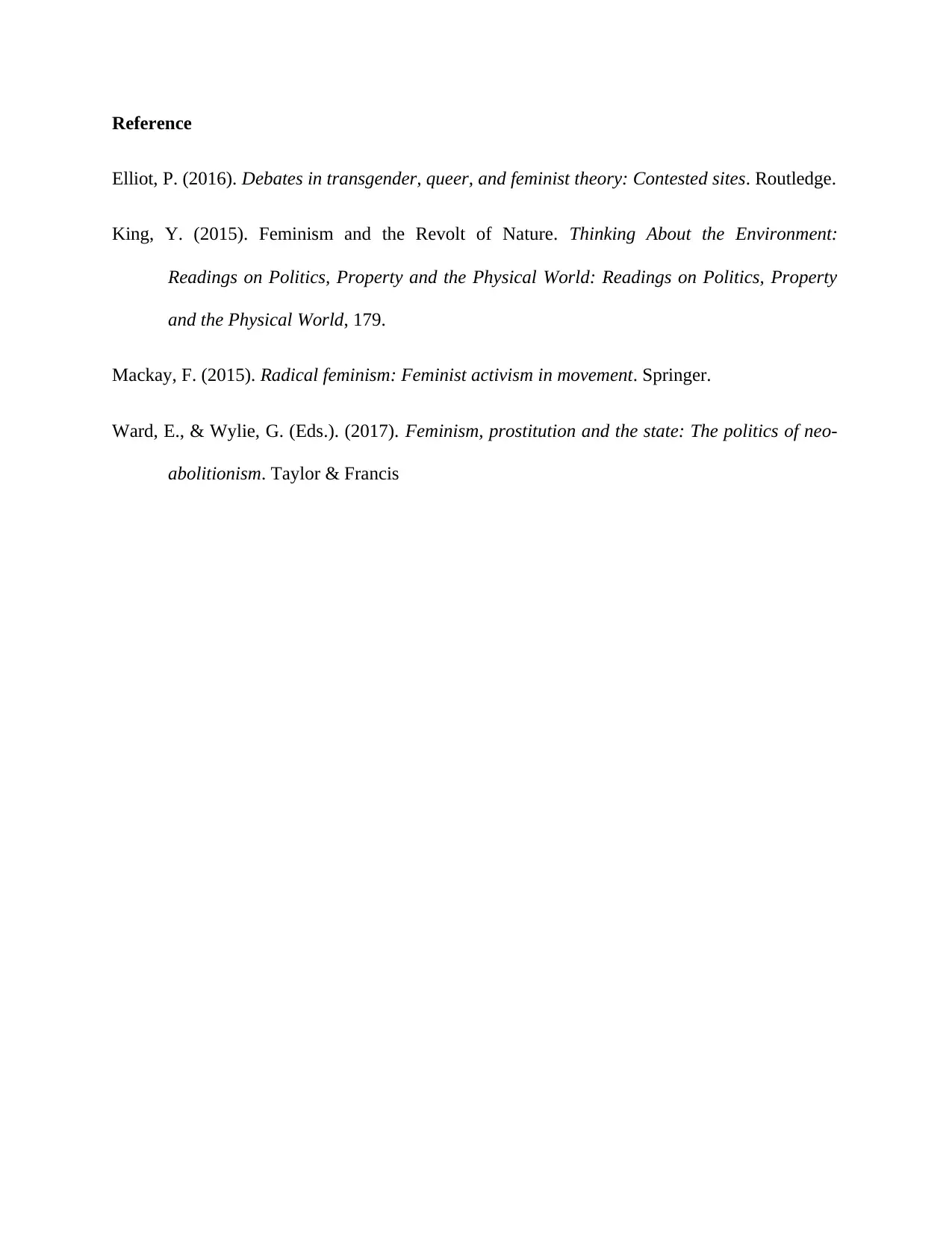Radical Feminism: Origins, Development, and Societal Influences
VerifiedAdded on 2022/10/06
|4
|736
|17
Essay
AI Summary
This essay provides an overview of radical feminism, a branch of feminism that emerged in the 1960s, significantly influenced by the civil rights movement. Radical feminists view patriarchy as the root cause of women's oppression and aim to dismantle it to achieve gender equality. The essay explores the historical context of radical feminism, its key concepts, and its evolution, including the contributions of prominent figures. It discusses the movement's impact on issues like abortion rights, equal pay, and the sexual revolution, as well as its stance on transgender rights and gender-neutral inclusivity. The essay highlights the positive changes brought about by radical feminism in raising awareness and advocating for social justice, while also acknowledging the criticisms of its militant approach.
1 out of 4











![[object Object]](/_next/static/media/star-bottom.7253800d.svg)